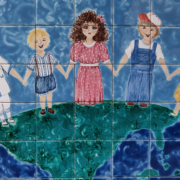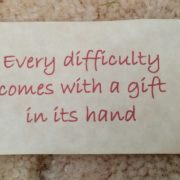Can cultivating compassion improve the process of psychotherapy?
Prior to becoming a therapist myself, I spent a significant amount of time on the couch as a client. I am forever grateful for the encouragement and compassion I received on those couches as the therapists supported my journey of growth. However, for all of the compassion they may have offered me, none of them taught me about compassion. I learned about compassion through the Eastern philosophies I studied as part of my yoga training. As I began to practice compassion consciously, I came to personally discover its deep healing power. So, when I began to practice as a licensed psychotherapist, I integrated Eastern and Western approaches, and teaching compassion to my clients is a tool I rely upon to facilitate healing and transformation.
Compassion guides us into spaces of acceptance of our limitations as human beings, to embrace our imperfections, and to comfort ourselves when experiencing suffering. It soothes the inner critic and perfectionist, it reduces the amount of pressure on our overly developed responsible part, and creates space in our lives for more connection, peace and joy. Until perhaps more recently, compassion – and specifically self-compassion – was not something that was taught to us as children, or even as adults. So, by the time we are adults, we have been led to believe that the inner critic is our internal motivator to do more and better. Instead the inner critic partners with the perfectionist to wear us down, telling us we will be enough and worthy once we, and everything around us, is perfect. That is simply an impossible dream that we are chasing, inviting in exhaustion, anxiety, depression, shame, and isolation.
Through the years of not only offering compassion to my clients, but teaching them to offer compassion to themselves, I have noticed how it has enhanced the process of psychotherapy and made the effects more enduring. A mantra I offer my clients is that self-compassion is the antidote to what ails them. Easily said, but perhaps not so easily implemented. Yet, when clients begin to loosen the grip of the inner critic and perfectionist and begin to challenge the myth that self-care is selfish, they begin to experience relief from their symptoms. I don’t need any more evidence than that to know that compassion works!
However, for those that might want to read more about the effects of compassion, including how it creates structural changes in the brain, click on the link below for the most recent research in this area.












